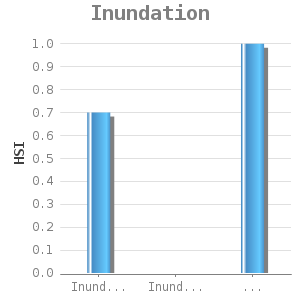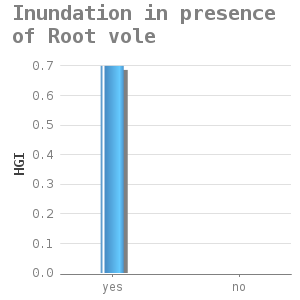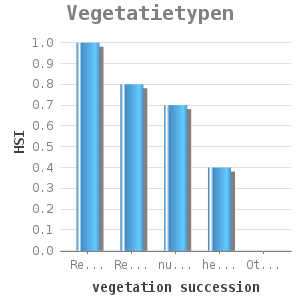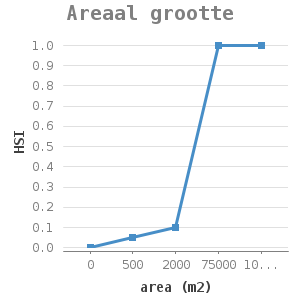General Characteristics
General Characteristics |
|
|---|---|
Common name |
Tundra Vole - Microtus oeconomus |
Regiom |
The Netherlands, Northern Europe, North Asia, North America |
Watersystem |
wetlands, banks, lakes |
Nature parameter |
mammals |
HR no |
H1340 |
Factsheet made by |
K.E. van de Wolfshaar & V. Harezlak |
|
(Foto: www.nioz.nl/vleet/) |
Description Habitat
Occurrence
The tundra vole is found from North Scandinavia through Siberia and Alaska to Canada. The subspecies arenicola can only be found on Texel and the low-lying parts of the Netherlands. This makes it the only Dutch endemic vertebrate. Based on its occurrence, five regions in The Netherlands have been identified which vary in natural characteristics, water management and soil#1.
1. Friesland
2. Texel
3. North-Holland centre
4. Peat meadow areas Holland-Utrecht
5. Delta region
The conditions that determine if a habitat is suitable for the tundra vole differ per region. Specific habitat characteristics are a dynamic environment with varying water levels and meadows with abundant cover. When faced with competition, this species clearly prefers wet areas, such as reed-land, marshes, swamp meadows, moist dunes and periodically flooded areas or high vegetation areas with mostly grass-like plants #3. The area, however, must not be too covered or too open#4. The tundra vole is a good swimmer and is able to reach small islands, where it has no competition of other voles.
The tundra vole has to compete with other vole species, especially with the field vole and the common vole #1, #5. The prevailing conditions determine which vole occurs. If the field vole is found, the chance of finding a tundra vole is reduced by 44-61%. For field voles, a negative effect was only monitored in a habitat with optimal conditions for field voles and not for tundra voles #6. The bank vole can also be considered as a competitor, but to what extent is uncertain #2. The field vole clearly prefers a habitat with a stable water level to habitats that regularly flood#7.
The tundra vole can move easily in water but also on land (up to approx. 3200m), its mobility is higher than that of the field vole. There is also a relation with the morphology of the habitat. If there are enough places to hide, this is an advantage for the field vole as it can quickly seek refuge during flooding and when the water drops it can colonize the habitat again. However, if there are just few hiding places, the tundra vole has the advantage, especially if the hiding places are located near the habitats outer sections #4. There is however only a strong suspicion of the competition between the field vole and tundra vole, no data is available to confirm or deny it#5.
Food habitat and strategy
The tundra vole is a strict herbivore and is not selective when choosing food. It feeds (among others) on young reed vegetation and Juncaceae species. In winter, they also feed on bark, seeds and roots and in summer on herbs. In winter, they stockpile food in shallow chambers #5.
Breeding (reproduction) and migration
The tundra vole is territorial. The territory of a male can cover approx. 20 metres square#5. Its radius of action is estimated at a maximum of 800 metres per day. In The Netherlands, Germany and Austria, the breeding season lasts from April to October. In more northern parts it lasts from May to September #8.
Age and mortality
Life expectancy unknown, calculated at max 1.4 year in free nature and 1.8 year in captivity.
Female sexually mature 30 days
Male sexually mature 48 days (42-56)
Gestation 20-22 days
Breeding season April - September
Nursing period 19 days
no of young per litter 7 (3-8)
no of litter per year 3.5 approx. 5 max
Interval between litter 29 days #1
Dose-effect relations
Flowdiagram
The total habitat suitability is calculated as follows:
if(HSI_Inundation<1, min(HSI_Inundation,HSI_Aardm,HSI_Vegetation), HSI_Vegetation)
If the suitability for inundations equals one than:
If the suitability for inundations is below 1, it must be checked whether or not the root vole Microtus agrestis occurs here.
Dose-effect relations

Inundation |
HSI |
|---|---|
Inundation in winter |
0.7 |
Inundation in summer |
0 |
No inundation |
1 |
The tundra vole is a good swimmer, winter inundation is therefore no problem. But there is a chance of drowning when their holes flood. Inundation outside the winter season can result in death of their young, as they cannot yet swim properly #5.

Inundation in presence of Root vol |
HSI |
|---|---|
yes |
0.7 |
no |
0 |

vegetation succession |
HSI |
|---|---|
Reed vegetation (wet) |
1 |
Reed vegetation (dry) |
0.8 |
nutrient poor grass land (wet), reed, hydrophilous tall herb fringe communities |
0.7 |
herbaceous grassland, open fields |
0.4 |
Other vegetation types |
0 |
Please note that the vegetation information of the Volkerak-Zoommeer projects is derived from the water plant module (riverbank vegetation, HSI>0.5) and the ecotope map, as was used previously in the project 'Seizoensgebonden Peilen IJsselmeer' (only in Dutch). In addition, a vital population of 50 males and 100 females need a habitat of 75000m2 with suitable vegetation. Smaller areas can function as a temporary habitat #10.
Uncertainty and validation
The dose-effect relations have been validated on Makkumer values, for which the habitat suitability was set at a value of 0,7 and higher. The 2006 and 2008 measurement data come from the De zoogdierenvereniging (mammals association).
occurrence correctly predicted |
0.75 |
absence correctly predicted |
0.25 |
occurrence wrongly predicted |
1.0 |
absence wrongly predicted |
0.0 |
|
|
|---|---|
measurements |
model predictions |
Remarks and recommendations
As remarked earlier, it is not possible to indicate how and to what extent the tundra vole experiences competition from the field vole (and common vole). This is however of crucial importance. Therefore, when designing the HABITAT model, the competition of the field vole with the tundra vole will be taken into account, based on general information. If research shows that there is no competition between the two species, or it is at another level, than the field vole knowledge rules will be removed from the model, or they will be adjusted. With regard to the hiding places in case of inundation, no model is available for this purpose.
Applicability
The occurrence of the tundra vole is also determined by other habitat factors, such as grazing pressure, mowing policy and food availability. As these factors remain the same in the different study variants, they do not influence the outcome of the habitat analysis of this study. They can be taken into account when calculating future scenarios. The knowledge rules can be applied to the Dutch great lakes.
Exemplary project
Habitat analysis in the framework of the Plan study/EIS for Krammer, Volkerak and Zoommeer. WL report Q4015. 2006
References
1 Witte van den Bosch, R.H., D.L. Bekker & J.J.A. Dekker, 2009. Landschapsdynamiek voor de noordse woelmuis, Landschap 2009-3: 146-152.
2 Haasnoot, M. en Van de Wolfshaar, K.E.. Habitat analyse in het kader van de Planstudie/MER voor Krammer, Volkerak en Zoommeer. WL report Q4015. 2006
3 http://www.minlnv.nl/natura2000
4 La Haye, M., J.M. Drees en R.C. van Apeldoorn: "Beheerplan Noordse Woelmuis". Ministerie van LNV, 2004
5 Witte, R.H., 2010. Ecoprofiel noordse woelmuis Microtus oeconomus arenicola. Soortinformatie ten behoeve van modellering, mitigatie, compensatie en ecologische herstelmaatregelen Zoogdiervereniging, Nijmegen.
6 Nieuwenhuizen, W., M.J.J. La Haye & F. Mertens, 2000. De noordse woelmuis in Fryslân. Naar een duurzame instandhouding. Alterra-rapport 149, iSSN 1566-7197.
7 Bergers, P.J.M., R. van Apeldoorn & H. bussink, 1994. Spatial dynamics of fragmented root vole (Microtus oeconomus) populations: preliminary results. Pol. Ecol. Stud. 101-105.
8 http://nl.wikipedia.org/wiki/Noordse_woelmuis
9 Hollander, H. en J.O. Reinhold. 1999. HSI-Modellen voor 5 oevergebonden zoogdiersoorten. Voorlopige versie op basis van de huidige ecologische kennis. Rijkswaterstaat Dienst Weg en Waterbouwkunde. DWW Rapport W-DWW-99-011.
10 Haasnoot, M., Kranenbarg, J. en van Buren, R.. Seizoensgebonden peilen in het IJsselmeergebied. WL report Q3889. 2005.

